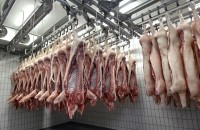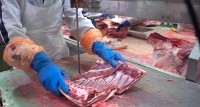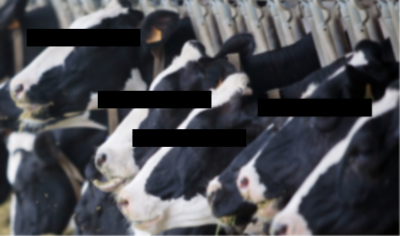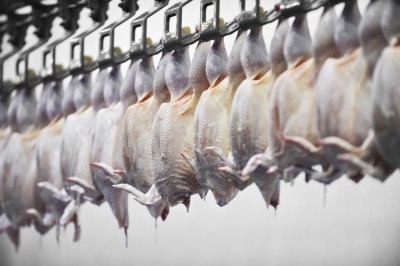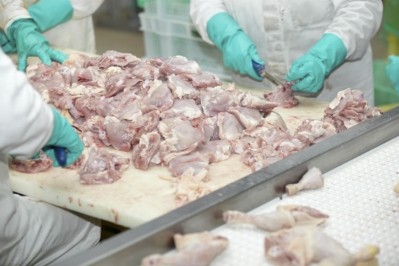ABATTOIR FOCUS
Are small abattoirs for the chop?
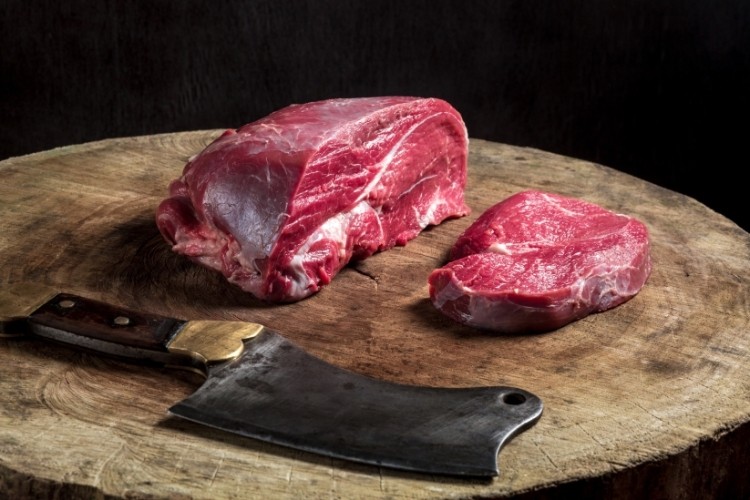
When the last remaining abattoir on Orkney shut up shop in January, maintenance costs and lack of technical staff were blamed. Having ploughed £1m into the plant since 2012, Orkney Council said the site was no longer viable. Since the closure, the island’s farmers have had to ship around 50 animals a month 150 miles south to Dingwall, in Scotland, for slaughter.
But Orkney is not an isolated case. In April, another Scottish abattoir, the 120-year-old Dunbia-owned Rhinds of Elgin announced its closure. And in May, a fifth-generation Somerset butchery, Bakers of Nailsea, decided to shut on account of “relentless red tape”.
The recent list of closures reflects a long-term trend. One in three small abattoirs in the UK has closed in the past decade, claims the Sustainable Food Trust. There are now just 249 red meat abattoirs in the UK, down from 320 in 2003 and 1,890 in 1971, according to a report published by the charity in February.
So, is the sector a victim of over-regulation, or is it simply adapting to shifting market demands? Will the decline continue? And how will the remaining abattoirs have to adapt to survive?
According to the Campaign for Local Abattoirs (CFLA) – made up of the Sustainable Food Trust, the National Federation of Meat and Food Traders, Fir Farm, Pipers Farm, Mettrick’s Butchers and Tideford Abattoir – numerous factors are behind the closures.
Leading the way, it claims, are: falling profitability due to competition from high-volume abattoirs supplying supermarkets; increased costs of waste disposal; excessive regulation hitting smaller businesses disproportionately; and low prices paid to small abattoirs for hides and skins.
In response to the Department for Environment, Food and Rural Affairs’ (Defra) Health & Harmony consultation, the group has submitted a paper arguing for emergency intervention. “We have reached a critical level, with several blackspots around the country where smaller abattoirs simply do not exist,” the paper says.
The group has even gone so far as to ask the Government to launch an inquiry into the sector and has called for public money to be given to small abattoirs in the form of “an immediate cash injection” to provide “breathing space” for struggling businesses.
Abattoirs and meat processing businesses have always complained about the burden of red tape and needless bureaucracy. But two cases in the past year have led to fears that actually there isn’t enough of a burden on meat businesses.
Russell Hume and 2 Sisters Food Group were both accused of breaching hygiene and labelling rules, triggering an ongoing industry-wide review of all meat cutting plants in the UK, led jointly by the Food Standards Agency (FSA) and Food Standards Scotland.
Fight against bureaucracy
These cases haven’t discouraged the Association of Independent Meat Suppliers (AIMS), which represents small and medium-sized abattoirs, in its fight against bureaucracy. It is in discussion with the Government about whether Brexit could provide a chance to reduce the paperwork burden for these firms.
“We’re talking with them about what a possible domestic baseline meat inspection standard would look like post-Brexit, which, if we’re able to deliver it, should reduce the paperwork and bureaucracy for the smaller plants,” says Norman Bagley, AIMS policy director.
“We’re also working with Defra on the livestock information programme as it is called, which will be a real-time database for tracking livestock movements. That would take an enormous amount of paperwork out.”
Bagley acknowledges there are a few blackspots in the country where no abattoir provision now exists, but adds that many abattoirs have increased throughput and are benefiting from a surge in demand from high-end catering butchers supplying pubs, restaurants and hotels.
“About 10 years ago, the smallest plants were only allowed to process 20 livestock units a week,” he says. “So there was no incentive for those small plants to do more. But then, they removed that rule, so although, numerically, we have lost a net number of plants, lots of small plants that used to operate one day a week now do three days a week.
“My contention is the number of animals actually going through those small plants is significantly more than it was 10 years ago.”
Also, those still trading are riding a wave of demand for high-quality local meat. As out-of-home eating has become a more normal part of the week for many households, independent catering butchers have benefited.
“They are at the sharp end of serving small chains of pubs and restaurants with higher-end meat,” says Bagley. “That means the small and medium-sized abattoirs become service providers to those catering butchers.
“The contract slaughter end of the business has seen significant increases these past few years. If you’d have gone into a high-class pub a few years ago and asked for a burger, they’d have sent you down the road to McDonald’s. Now, they’re all offering these £12-£15 burgers – that’s what I call premiumising mince.”
At the large-scale, high-volume end of the market, there has been significant investment in facilities and technology. In May, Scotbeef lodged plans to build a new abattoir at Thainstone Business Park near Inverurie in north-east Scotland, covering more than 7.5 acres.
Improving automation
As automation technology improves, UK meat and poultry processors are ploughing money into new systems, in some instances removing the need for animal handling – which can cause stress – as well as improving speed, accuracy and hygiene through the whole processing plant.
Last autumn, 2 Sisters – which supplies a third of all poultry meat in the UK – refurbished an abattoir and processing plant in Scunthorpe. The firm invested £45m into the revamp, which it claims makes it “the world’s most advanced poultry processing plant”.
The birds are slaughtered without ever being handled, which the firm says is better for them. Crates containing the birds are moved into a gas stunning unit, where they are rendered unconscious, before moving through the automated blood draining, plucking, evisceration, and head and feet removal stations.
Automation is also becoming increasingly prevalent in high-throughput, large abattoirs, in a bid to tackle fears over worker shortages. The meat processing industry recruits the majority of its staff from EU nations, and many businesses are concerned about how they will fill these positions in the run-up to Brexit and beyond.
Other improvements in abattoir equipment are also filtering into plants. One of the most dangerous operations in the preparation of meat is the cutting, with bandsaws and their moving blades particularly prone to causing injuries.
But technology is making processes safer. Devices such as the Bladestop, from Interfood Technology’s butchery division, are designed for use where sections of the moving bandsaw blade are totally exposed.
When the unit senses the operator has come into contact with the blade, or is even dangerously near to it, the blade stops. The system was designed, developed and manufactured by Scott Automation & Robotics.
“Bandsaw safety has become a real focus, and rightly so, given the severity of the cuts, muscle and nerve damage and even amputations that can result in those operating them,” says Richard Nethercot, group divisional manager for low risk at Interfood Technology.
“We have seen a significant increase in the number of systems purchased, which can help dramatically in reducing the potential for injury.”
It’s impossible to discuss technology and not mention the CCTV legislation that came into force in May. All abattoirs in England are required to comply in full by 5 November, giving them six months to install a suitable CCTV system.
CCTV
Official Veterinarians (OVs) will have unrestricted access to footage to reassure consumers that high welfare standards are being effectively enforced.
The law was passed to “cement the UK’s position as a global leader in animal welfare standards”, said Lord John Gardiner, the government’s minister for animal welfare, upon enforcement of the legislation.
“These strong measures will ensure all animals are treated with the utmost respect at all stages of life, allowing us to continue to lead the way to raise the bar in high welfare standards.”
All the main meat industry and animal welfare organisations support the introduction of CCTV. However, some groups have expressed concerns over how workers might be affected by constant surveillance.
AIMS members support the use of CCTV as a “valuable tool for management and training”, according to Bagley. But he points out boots on the ground are a far more effective deterrent against animal abuse than cameras being monitored remotely. “FSA officials could be diverted from positive input on welfare by CCTV,” he says.
The rights of abattoir staff need to be considered, Bagley adds. “We do not believe they deserve to be subjected to constant scrutiny without their consent when other workers – for example, in hospitals and care homes – are not subject to continuous CCTV monitoring by prosecuting authorities.”
Many members of the British Meat Processors Association have had CCTV for years because retailers have insisted upon it, according to its chief executive Nick Allen.
“It’s relatively easy to put it into place,” he says. “It only has to be in the slaughter area.” There are some challenges in the pig sector, he points out, where pigs are often lowered into an underfloor area where gas is administered, but these are logistical issues it should be possible to overcome.
Where Allen does have a concern is that the law as written – which requires the footage to be stored and made available for 90 days – would permit anyone from the FSA to view the footage. Allen believes only the OV should have access.
“It’s not really practical for all and sundry to say, ‘I want to look at it’,” he says. “We’ve been in discussion with the FSA and there are a few things to be ironed out, but we’re reasonably confident it’ll work.”
Openings and closures
Openings
Plans were lodged in May to build an abattoir in a north-east town. Meat firm Scotbeef wants to build the facility at Thainstone Business Park near Inverurie. The proposal states the facility would cover more than 7.5 acres – including a car park with 96 spaces at the front of the site.
The only large pig abattoir in Scotland reopened in November 2017 after a major fire at the site in the summer. The Brechin abattoir, owned by Quality Pork, was only officially opened in September 2016 after a £10m refurbishment. It was extensively damaged by fire and smoke in August 2017.
A group of Orkney butchers are planning to build a new fit-for-purpose abattoir on the island after the only remaining premises closed in January.
Closures
Fifth-generation business, Bakers of Nailsea, Somerset, closed its abattoir in May due to “relentless red tape”.
The 120-year-old Rhinds of Elgin, owned by Dunbia, closed in April.
Orkney’s only abattoir closed in January after Orkney Island Council pulled out of an arrangement with local butchers to fund it. The council said it had spent about £1m on the facility since 2012 in an effort to keep it open. The abattoir at Hatston had been processing about 50 animals a month.
